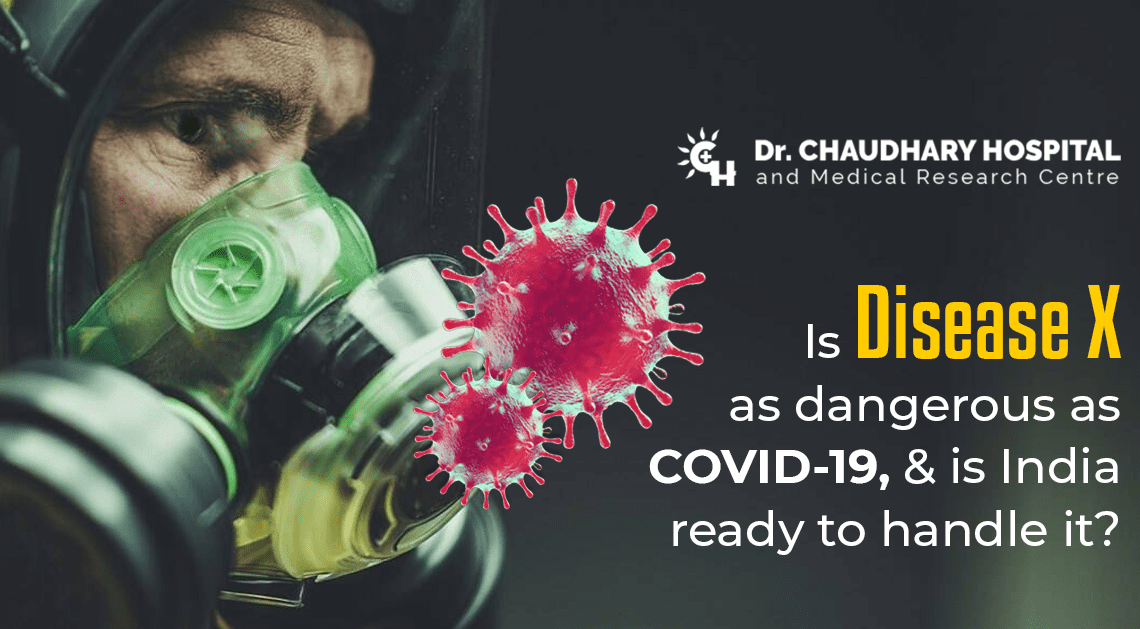It’s not long since WHO (World Health Organization) announced the outbreak of COVID-19, and that it was no longer a global emergency, signifying the monumental ending of a deadly pandemic that put the lives of billions of people worldwide at risk. Now, experts and professionals are under the fear that an even more fatal disease might break free and cause an even more lethal pandemic. As we grapple with the ongoing pandemic, concerns about future outbreaks loom large. One such concern is the concept of “Disease X“.
According to the WHO, “Disease X represents the knowledge that a serious international epidemic could be caused by a pathogen currently unknown to cause human disease.” The phrase was first used in 2018. In this blog, we will explore the hypothetical nature of Disease X and assess India’s readiness to deal with such a threat.
Understanding Disease X
The WHO originally released a list of diseases that could start a “deadly pandemic” in 2017 and then carried out a prioritizing exercise the following year. The list currently contains COVID-19, Ebola virus disease, Marburg virus disease, Lassa fever, Middle East respiratory syndrome, severe acute respiratory syndrome (SARS), Nipah, Zika, and the most recent addition to the list, “Disease X.”
Disease X is not a specific disease but rather a placeholder term used by the World Health Organization (WHO) to describe a previously unknown or unforeseen pathogen that could cause a future pandemic. The concept of Disease X serves as a reminder that new diseases can emerge at any time, posing significant risks to global health security.
COVID-19 & Disease X
To assess the potential danger of Disease X, we can draw comparisons with COVID-19. It is important to note that Disease X is a hypothetical scenario, and its characteristics are unknown. However, we can evaluate the preparedness and response mechanisms developed during the COVID-19 pandemic to gauge India’s readiness for a future unknown disease.
COVID-19 has proven to be highly contagious, causing severe illness and overwhelming healthcare systems worldwide. Its impact has been exacerbated by factors such as asymptomatic transmission and the absence of a vaccine during the initial stages. While Disease X may differ in specific attributes, it is crucial to be prepared for a range of possibilities.
How can India Handle Disease X after Battling with COVID-19?
India’s battle against COVID-19 has been a mixed bag. The country faced enormous challenges due to its large population, dense urban areas, and limited healthcare infrastructure in certain regions. However, India also demonstrated resilience, adaptability, and the ability to implement large-scale interventions.
The pandemic prompted India to strengthen its healthcare system, enhance testing capabilities, and establish dedicated COVID-19 treatment facilities across the country. Additionally, the government implemented nationwide lockdown measures, leveraging technology for contact tracing, and facilitating vaccine distribution.
How Can the Country Prepare?
The experience gained during the COVID-19 pandemic provides valuable insights and lessons for India’s readiness for Disease X. Here are some key areas that need attention:
Strengthening Healthcare Infrastructure
India must continue investing in healthcare infrastructure, including hospitals, diagnostic laboratories, and research facilities. This will enhance the capacity to respond to future outbreaks effectively.
Improving Surveillance and Early Detection
Developing robust surveillance systems and early warning mechanisms can aid in detecting and containing a new disease. Timely identification and tracking of potential outbreaks are crucial to mitigate the spread. Additionally, it is necessary to spread awareness about the sudden emergence of the disease to timely curb and take essential safety measures.
Enhancing Research and Development
India has a strong pharmaceutical industry and a wealth of scientific talent. Encouraging research and development in the field of infectious diseases, vaccines, and therapeutics will bolster the nation’s ability to respond to novel threats.
Building a Skilled Workforce
Strengthening the healthcare workforce by improving training and providing necessary resources will ensure a competent response during future outbreaks. Well-trained healthcare professionals are vital for managing emergencies effectively.
Strengthening International Collaboration
Disease X is a global concern that necessitates international cooperation and information sharing. India should actively engage with international organizations, exchange expertise, and contribute to global preparedness efforts.
Conclusion
While the concept of Disease X remains hypothetical, it serves as a reminder of the unpredictable nature of emerging infectious diseases. India’s response to COVID-19 has been a learning experience, highlighting both strengths and areas for improvement. The nation’s readiness to handle Disease X will depend on its ability to strengthen healthcare infrastructure, enhance surveillance systems, invest in research and development, build a skilled workforce, and foster international collaboration.

